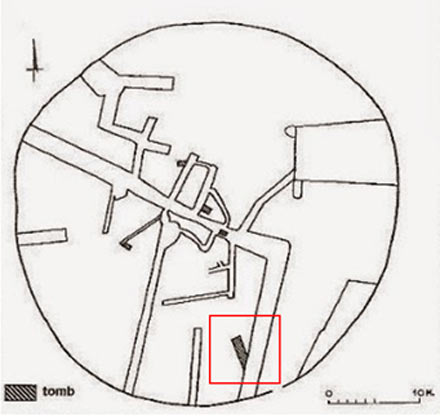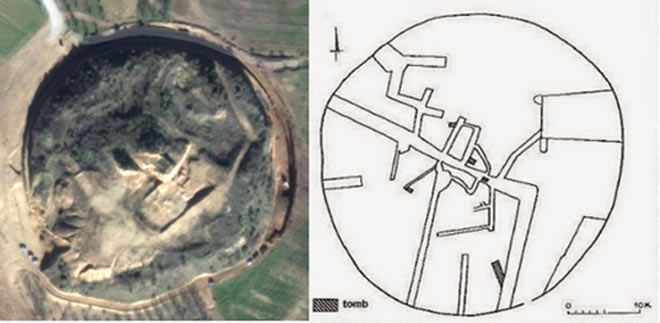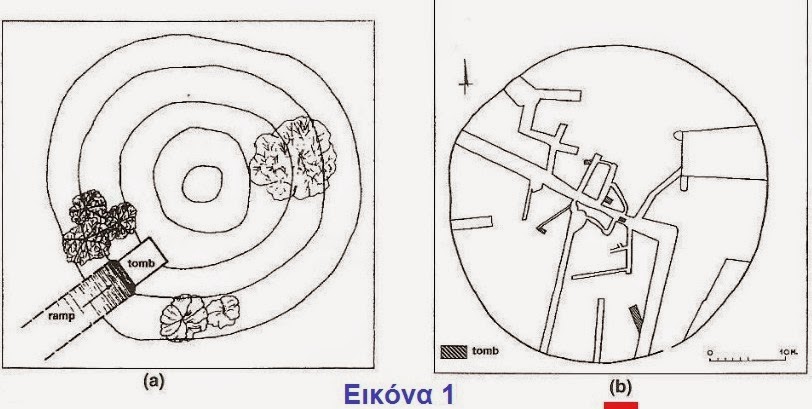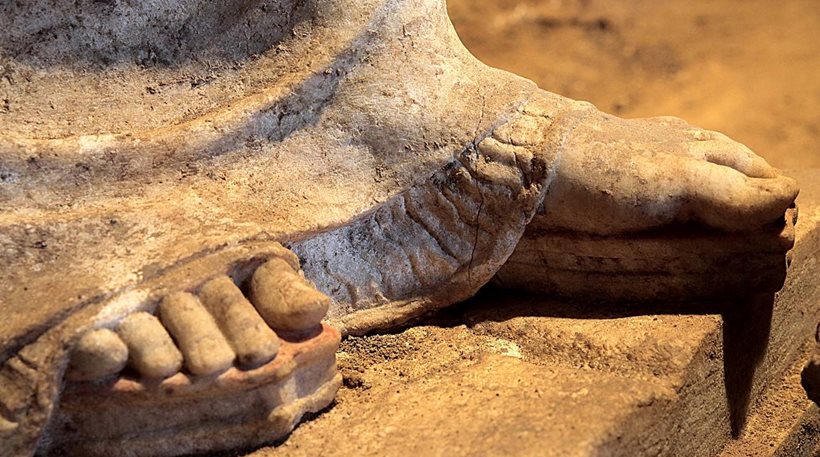The Ministry of Culture’s latest announcement on the ancient tomb of Amphipolis is scheduled for 1 p.m. on Wednesday. Speculation is focused on two areas: (a) geophysicists preliminary findings that there may be an extensive network of ancient underground tombs at Amphipolis; and (b) rumors of an underground stairway leading to a fourth chamber further underground.
Geophysicists’ findings
The new geophysical scans by the National University of Thessaloniki (AUTH) at the Kasta Hill burial mound at Amphipolis pointed to a labyrinthine presence of underground chambers and corridors. These findings show that there is a strong possibility for more tombs and chambers within the tumulus.
The research team led by Gregory Tsokas, Professor of Applied Geophysics at AUTH, has yet to release its official results but the group has conducted preliminary findings that show that there’s more to the complex mound than meets the eye.

The amfipolinews blogspot states that the red square marks the area where archaeologists are digging
The geophysical research used the latest methods available to identify what lies beneath the tons of soil that make up Kasta Hill and update older measurements from studies conducted by the University of Patras and teh Technological Educational Institute of Serres.
The geophysical research steps in to complement the archaeological findings of the Ministry of Culture. Mr. Tsokas ahs acknowledged that the high-tech scans are complicated due to the height of the burial mound, the density of layers and the ‘noise’ generated by natural phenomena that include the large rocks that create a risk of giving an inaccurate image. Hence, the geophysicists are taking the time to analyze the results of their findings and further process results in the Laboratory of the Aristotle University.
The preliminary images appear to be a man-made network of tunnels and rooms. On first appearance it seems that there is a necropolis under the mound that may indeed justify archaeologist’s view that Amphipolis is the “discovery of the decade”.
The Staircase
A leak regarding a stairway found at the floor area of the third chamber (8.5 meters beneath the chamber’s roof) has yet to be confirmed or denied. A trench in the shape of a parallelogram in the floor of the chamber has yet to be explained by archaeologists. Hopefully, more findings will give a clearer view as to the date of the tomb and its occupant. There is even speculation that the tomb may be from the Roman Era, a fact that enlarges the list of occupants of the tomb to include a wider range of ancient VIPs.
Ask me anything
Explore related questions








